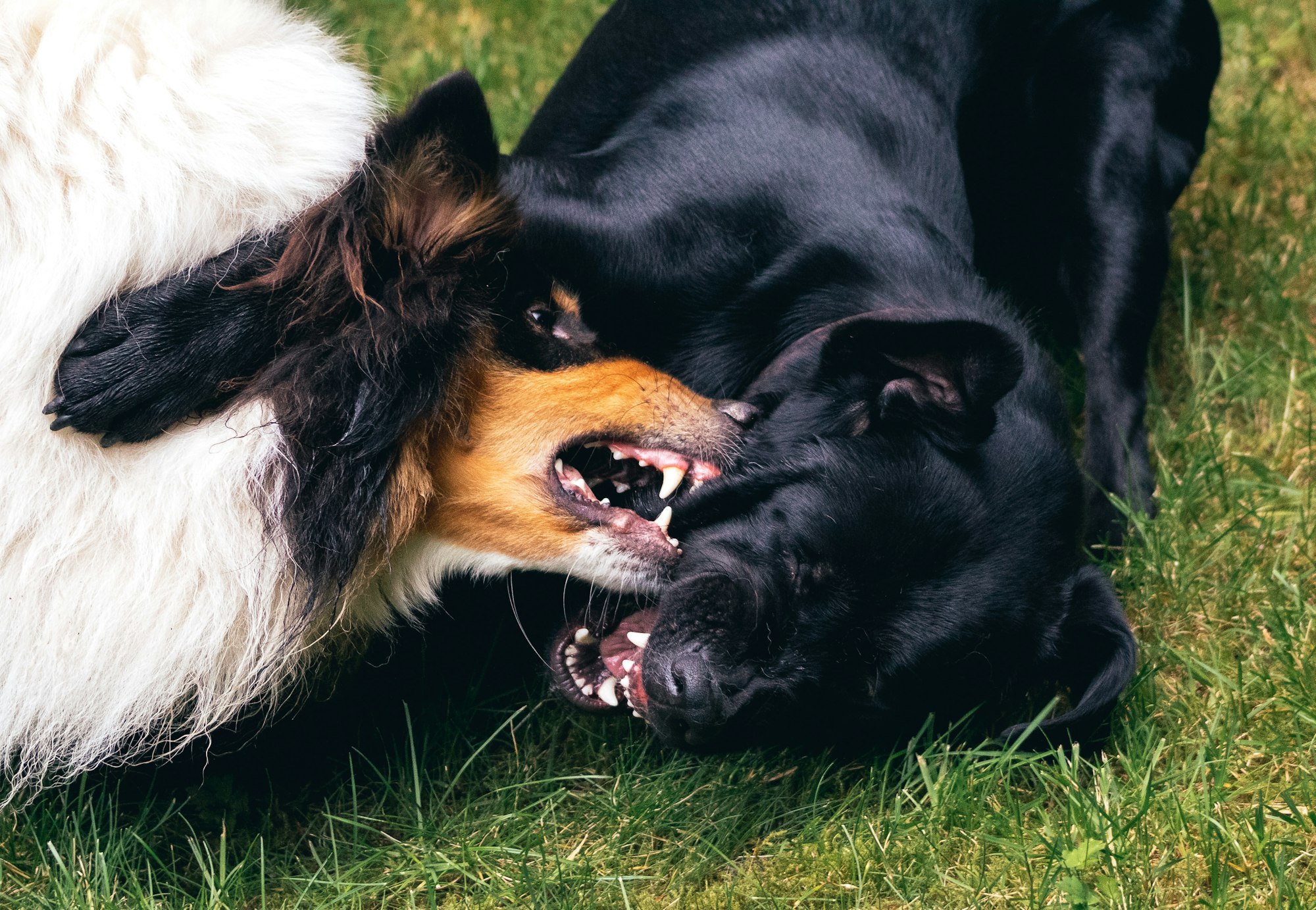Dog Fights and what to do when it happens

by: Dr. Antonio Miguel Antazo
It often happens very quickly, someone walks their dog, suddenly they stop and next thing you know, another larger dog is charging at them with intent to harm the owner’s pet. How does this happen? What do you do when faced with this situation? And what can one do to prevent this from happening?
First let’s talk about why dogs fight. There are a handful of reasons why dogs fight but some common ones are:
Resource guarding- Dogs will find a variety of things valuable, generally this could be food, or toys, or maybe a stray sweater or blanket the dog grows fond of. When trying to retrieve said items dogs may stiffen up, show visible aggression signs like growling or showing their upper teeth, lunge, and bite when one gets too close. In the wild, resources like food and shelter are important to feral dogs so this kind of behavior to protect these resources would make sense in that situation, this is not so in domesticated animals. Yet, why do they exhibit such behavior? Read more to know why.
Fear- Dogs will defend themselves when they feel afraid, and dogs’ self-defense will be to bite. When threatened, dogs will show aggressive signs such as growling and showing of teeth to hopefully scare another dog away. Only when they feel totally cornered will they attack out of fear.
Frustration- Dogs that are frustrated can develop aggressive behavior, this is especially observable in a dog that has not learned emotional self-control. When they do not get what they want, these dogs exhibit aggression.
Reactive Dogs-Reactive dogs can be pushed past their point of tolerance and for dogs with little self-control, their level of tolerance is especially low.
Rough Play vs Dog Fight
Dogs tend to use play to rehearse more serious behaviors, many of their games may look aggressive but it is just play, body slams and throat bites (play bites) maybe seen during these rough play sessions. How do you tell which is dog fighting or rough play fighting?
Here are some body language behaviors to observe:
- Relaxed and floppy dogs are more often seen in rough play, tense and stiff dogs are preparing to fight.
2. Hanging open mouths are a sign that they want to play as wide-open play face is used to show the other dog they mean no harm. Its when they tighten their lips and snarl that should be watched out for, or when they show their upper teeth.
3. Play fights usually start with a bowing action from the dog (front end goes down and the rear stays up) this is a gesture that this fight is a playful one.
4. During rough play, dogs will alternate slamming chasing and biting, like taking turns playing games. If you notice one dog being the only aggressive one, this may not be a play fight anymore.
5. Play fights include many exaggerated movements, bounding big movements that actually look very playful. Dog fights are efficient with fast movements, quick bites, no exaggerated gestures of play
How do you prevent Dog Fight?
Dog fights always end up with consequences, and they may be severe, so the best approach is to prevent/avoid them completely. You must predict and avoid a fight before it even occurs.
Learn how to read a dog’s body language and understand dogs’ signs of stress. If you see that your dog is approaching the edge of their comfort zone, you must intervene and remove them from that situation.
Possible signals that show dog is stressed:
- Vocalization, whines, barks, or growls
2. Tail tucking, a show of fear
3. Ears are flattened against head
4. Pacing
Aggressive intent can be observed on dogs you may encounter so its important to detect these signals. A hard stare is a common threat amongst dogs. Dogs who lower their head and raise their hackles, or those who freeze/stiffen up are out for a fight.
Prevention is a very good way to prevent dog fights from happening. However, should the fight commence, what should you do? When stopping a dog fight, one should remember the safety of the dogs and of course yourself.
Here are some ways to stop dog fights:
- Before you can stop a fight, you must first make sure you are calm so you can take the proper cautionary measures to end the fight.
2. Use an object to separate the dogs. A piece of plywood or trashcan lid, any object large enough to block both dogs from reaching each other. Never get in between dogs as in confusion, the dogs will mistake you for a target.
3. Distract the dogs. A good distraction is loud noise, create as loud of a noise that you can make, use tools like airhorns or banging of lids to startle them and give you enough time to pull or remove the dogs from each other.
4. Using a hose, douse the dogs with water. This gets the dogs attention and keeps them from fighting, giving you time long enough to remove either your dog or the other dog from the situation.
5. Dogs will usually stop fighting when they are unable to see each other. Throwing a blanket over each dog will obscure their vision enough to stop the fight.
6. A technique called the wheelbarrow method is used to stop dog fights. It is done when both owners of the dogs fighting grab the back legs of the animal and pull them away from each other. Once enough distance is created, they turn in a circle while still pulling back the dog. This ensures that the dogs are pulled apart and keeps them from biting the person holding their legs.
Always remember to know your limitations and to do what feels safe for you and the dogs involved. Do not attempt anything that will put you at risk.
References:
Why dogs fight?, Dogs aggression signs , rough play vs dog fight, dog fight prevention, dog fight stoppage How to Break Up a Dogfight: Stop Dogs From Fighting (akc.org)
Dog fight prevention, Dog fight stoppage (wheelbarrow method), Dogs aggression signs How to Break Up a Dog Fight the Right Way (ccspca.com)
Dog fight prevention, dog fight stoppage How to Break Up a Dog Fight: 15 Steps (with Pictures) - wikiHow Pet
